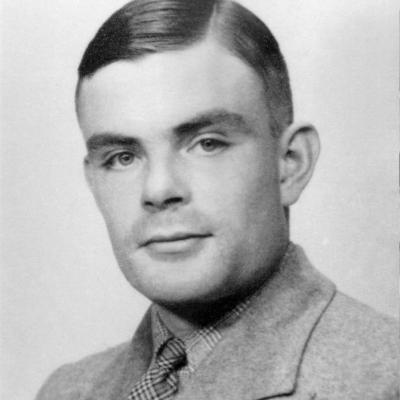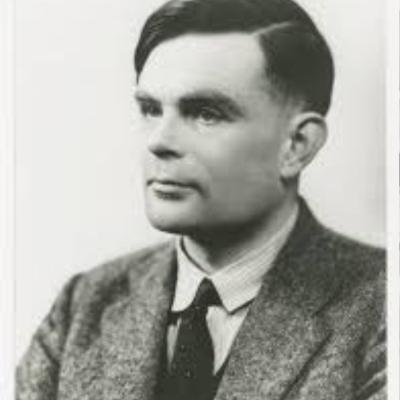Anúncios
Alan Turing, widely recognized as the father of modern computing, was one of the greatest mathematicians and scientists of the 20th century. His revolutionary contributions laid the foundation for computing and artificial intelligence, shaping the technology we use today. The application of profound mathematical concepts was central to his discoveries and to the advancement of computer science.
With his Turing Machine, Turing established the limits of what is computable, influencing a vast range of disciplines beyond mathematics. His work not only contributed to computational theory but also had significant practical implications, especially in areas such as cryptography and artificial intelligence. Understanding his work is essential for understanding the birth and evolution of modern computing.
Anúncios

The Turing Machine and Its Foundations
The Turing Machine is one of the most important concepts introduced by Alan Turing. It is an abstract representation of a computer that manipulates symbols according to pre-established rules. This theoretical model helped define the limits of computation, establishing what can and cannot be computed.
This simple machine, consisting of a tape and a read/write head, became the foundation for computational theory. The idea of a machine capable of performing any mathematical calculation solidified as the fundamental concept in computer science. With this, Turing offered a universal model for computational machines.
The Turing Machine is also related to a crucial problem in computing, the Halting Problem. Turing demonstrated that there are algorithms that cannot be solved by any computational machine, thus defining the limits of computation. This concept is vital for understanding the fundamental restrictions of computing.
In addition to its theoretical value, the Turing Machine had practical impact. It inspired the development of the first electronic computers and helped in the creation of the first algorithms. Its impact was such that it is still used as a reference for the analysis of algorithms and programming languages.
Turing’s Influence on Artificial Intelligence

Turing was one of the first to explore the idea of machines capable of imitating human intelligence. His famous “Turing Test” proposed a way to measure whether a machine could demonstrate intelligent behavior indistinguishable from that of a human. This test is considered a landmark in the evolution of artificial intelligence.
Turing’s work laid the groundwork for the development of machine learning algorithms. He believed that machines could be trained to solve complex problems, a principle that guides many modern AI technologies. His ideas continue to be the backbone of contemporary research in the field.
Moreover, Turing addressed philosophical questions related to artificial intelligence, questioning what it means to be “intelligent” and whether machines could truly think. His reflections sparked important debates about the nature of the human mind and the possibility of conscious machines, themes that are still discussed today.
Turing’s influence on AI is not limited to his test. His principles helped establish the field of supervised learning, where machines are trained to recognize patterns and perform specific tasks. These concepts are the foundation of many modern AI systems that we use in our daily lives.
Turing’s Contribution to Cryptography
During World War II, Alan Turing played a crucial role in breaking the Enigma code used by the Nazis. He applied his ideas about algorithms and machines to create methods that could decipher coded messages, helping the Allies obtain vital information for victory in the war.
This work in cryptography was one of the first practical examples of modern computing. Turing and his team at Bletchley Park developed the Bombe machine, which significantly accelerated the process of breaking codes. This demonstrated the immense potential of computing machines in solving complex, large-scale problems.
Modern cryptography directly benefits from Turing’s contributions. His methods influenced the creation of cryptographic algorithms used today to secure data in financial transactions, communications, and other sensitive areas. His principles continue to form the basis of many security technologies.
Furthermore, Turing’s work in cryptography helped to show the intrinsic relationship between computational theory and practical application. He proved that computational machines were not only useful for solving mathematical problems but also for ensuring security and privacy in the real world.
How Alan Turing and the Birth of Modern Computing Through Mathematics Works
Alan Turing, often called the father of modern computing, made revolutionary contributions that laid the foundation for the development of computers and artificial intelligence. His work was primarily rooted in mathematics, where he developed concepts that would become essential in the field of computer science. Turing’s exploration of algorithms, computation, and the theoretical foundations of what it means to compute had a lasting impact on technology and society.
At the heart of Turing’s contributions is the Turing Machine, a theoretical construct that defines the limits of what can be computed. This machine is an abstract representation of a computational device that manipulates symbols on a tape according to a set of rules. Formulating this concept not only provided a framework for understanding computation but also helped establish the field of theoretical computer science. The implications of his work extend beyond mathematics and computer science, influencing philosophy, linguistics, and cognitive science.
Turing’s work during World War II, particularly his role in breaking the Enigma code, demonstrated the practical applications of his mathematical theories. The techniques he developed for cryptanalysis were not only crucial to the war effort but also highlighted the power of computing in solving complex problems. Turing’s ability to unite theoretical mathematics and practical applications is a testament to his genius and vision.
In summary, Alan Turing’s contributions to mathematics and computing are fundamental to our modern understanding of technology. His innovative ideas and theories paved the way for advances in various fields, making him a pivotal figure in the history of computing. Understanding how Turing’s work functions is essential to appreciating the evolution of modern computing and its mathematical roots.
How to Understand Alan Turing and the Birth of Modern Computing Through Mathematics

Understanding Alan Turing and his contributions to modern computing through mathematics involves exploring several key concepts and ideas that he introduced. Here are some essential points to consider:
The Turing Machine: This theoretical model is central to Turing’s work. It illustrates how a machine can perform calculations by manipulating symbols on a tape, serving as a foundational concept in computer science.
Algorithms and Computation: Turing’s exploration of algorithms—the step-by-step procedures for calculations—became a cornerstone of computer programming and software development.
The Halting Problem: Turing introduced the concept of the Halting Problem, which demonstrates the limitations of computation. It shows that there are certain problems that cannot be solved by any algorithm, highlighting the boundaries of what machines can compute.
Artificial Intelligence: Turing’s work laid the groundwork for the field of AI. His ideas about machine learning and intelligent behavior in machines continue to influence contemporary research and development in AI technologies.
Cryptography: Turing’s contributions to code-breaking during World War II exemplify the practical applications of his mathematical theories. His work in cryptography shaped modern cryptographic methods and cybersecurity practices.
Interdisciplinary Influence: Turing’s approach to mathematics and computation transcended disciplinary boundaries, inspiring collaboration between fields such as mathematics, computer science, philosophy, and cognitive science.
Understanding these points provides a comprehensive view of Turing’s contributions to modern computing through mathematics. His innovative ideas and theoretical frameworks continue to shape the technology and science landscape today.
In summary, understanding the importance of Alan Turing’s work requires an appreciation of the key concepts he introduced, including the Turing Machine, algorithms, the Halting Problem, artificial intelligence, cryptography, and interdisciplinary influence. These elements collectively highlight Turing’s profound impact on the birth of modern computing.
Did You Enjoy Learning About Alan Turing and the Birth of Modern Computing Through Mathematics?
Alan Turing’s legacy is a fascinating journey through the realms of mathematics and computing. His innovative ideas not only shaped the course of technology but continue to inspire new generations of thinkers and innovators. Understanding Turing’s contributions offers valuable insights into the evolution of modern computing and its profound implications for our world.
If you are intrigued by Turing’s work and its impact on technology, there is much more to explore. From the complexities of algorithms to the ethical implications of artificial intelligence, Turing’s influence permeates various fields, inviting further inquiry and discovery.
Frequently Asked Questions
Who was Alan Turing?
Alan Turing was a mathematician and computer scientist. He is considered the father of modern computing.
Why is Alan Turing important to computing?
He created the Turing Machine, a model that helps understand how computers work. He also helped decrypt codes during World War II.
How did Alan Turing contribute to mathematics?
Turing used mathematics to solve complex problems. He developed theories that guided the development of computing.
What does “the birth of modern computing through mathematics” mean?
This refers to the use of mathematics by Turing and others. They used this foundation to create the first computers and algorithms.
What was Alan Turing’s legacy in today’s technology?
Turing’s work still influences today’s technology. He helped create the foundations of artificial intelligence and computing.
